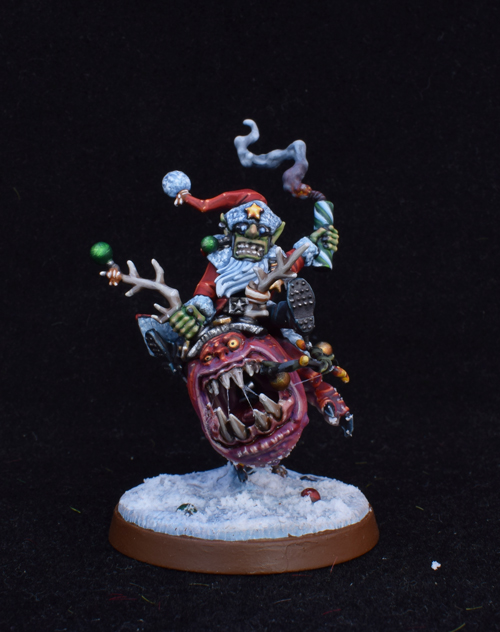

If you win, the action is completed otherwise, the action fails. If they do so, roll off with your opponent each player adds the Strength characteristic of one of their models that is within 1" of that Hatchway to their respective scores. If there are any enemy models within 1" of that Hatchway, your opponent can attempt to prevent the action from being completed. The action is completed at the end of your Movement phase if no enemy models are within 1" of that Hatchway. This action can be performed by any unit that is not within Engagement Range of any enemy models, even if that unit is being affected by a rule that would normally prevent it from performing actions. One or more units from your army can start to perform this action at the end of the Move Units step of your Movement phase if they are within 1" of a Hatchway. Every nearby Ork joins in before surging towards the enemy, blades ready in an overwhelming tide. Raising his weapons into the air before gesturing towards the enemy, the Warboss bellows his war cry. Both are active from when a Great Waaagh! is called, and each stage starts and finishes as described above. Calling a Great Waaagh! is treated as calling both a Waaagh! and a Speedwaaagh! at the same time. After this point, the Waaagh! or Speedwaaagh! is no longer active, and has no further effect. When the first stage ends, the second stage starts, and lasts until the start of your subsequent Command phase. The first stage is active from when the Waaagh! or Speedwaaagh! is called, and lasts until the start of your next Command phase. A Waaagh! and Speedwaaagh! each have two stages. To do so, GHAZGHKULL THRAKA must be on the battlefield or embarked on a TRANSPORT that is on the battlefield. If your WARLORD is GHAZGHKULL THRAKA, you can instead call a Great Waaagh!. To do so, that SPEEDBOSS must be on the battlefield. If your WARLORD is a SPEEDBOSS, then once per battle, in your Command phase, you can instead call a Speedwaaagh!. To do so, that WARBOSS must be on the battlefield or embarked on a TRANSPORT that is on the battlefield. If your WARLORD is a WARBOSS, then once per battle, in your Command phase, you can call a Waaagh!.

If an ability modifies the damage inflicted by a weapon, and that weapon can inflict mortal wounds in addition to the normal damage, the modifier does not apply to any mortal wounds that are inflicted (unless the rule specifically states otherwise). If an attack inflicts mortal wounds in addition to the normal damage, but the normal damage is subsequently saved, the target unit still suffers the mortal wounds, as described before. If an attack inflicts mortal wounds in addition to the normal damage, resolve the normal damage first. Instead, keep allocating damage to another model in the target unit until either all the damage has been allocated or the target unit is destroyed. Unlike damage inflicted by normal attacks, excess damage from mortal wounds is not lost. Do not make a wound roll or saving throw (including invulnerable saves) against a mortal wound – just allocate it as you would any other attack and inflict damage to a model in the target unit. Each mortal wound inflicts 1 point of damage on the target unit, and they are always applied one at a time.

Some attacks inflict mortal wounds – these are so powerful that no armour or force field can withstand their fury. For example, if a Grenade D6 weapon with the Blast rule targets a unit that has 11 or more models, that weapon makes six attacks against that unit.īlast weapons can never be used to make attacks against a unit that is within Engagement Range of the firing model’s unit, even if the weapon has the Pistol type or if the firing model is a VEHICLE or a MONSTER – firing high-explosives at point-blank range is simply unwise.


 0 kommentar(er)
0 kommentar(er)
